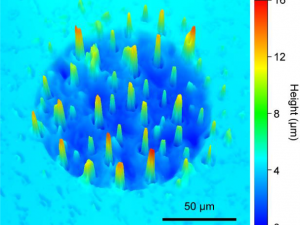Loss Analysis of Fully-Textured Perovskite Silicon Tandem Solar Cells: Characterization Methods and Simulation toward the Practical Efficiency Potential
Abstract
Optimally enhancing the performance of perovskite silicon tandem solar cells comes with accurate identification of loss origins in the device in combination with optoelectrical device simulations assessing the respective efficiency gains to prioritize optimization pathways. Herein, various characterization methods, namely, spectrally resolved photoluminescence (PL), transient-PL, PL-based implied open-circuit voltage (iVOC) imaging, spectrometric characterization, and Suns-VOC measurements are combined to quantify current density–voltage (jV) photovoltaic metric losses of a fully-textured perovskite silicon tandem solar cell (26.7% efficiency). The extracted device characteristic parameters are then used as a reference for the comprehensive optoelectrical Sentaurus simulation model which precisely reproduces the experimentally obtained optical and electrical solar cell characteristics, considering mobile ion dynamics. Subsequently, starting from the current device design, the authors alleviate one step at a time the loss constraints and show the impact of each loss channel on the efficiency, the impact of each loss channel on the efficiency, identifying the three major ones to be at the: 1) perovskite/C60 interface (−4.6%abs), 2) the series resistance (−2.9%abs), and 3) light management (−2.1%abs), which limit the VOC, fill factor, and jSC of the device, respectively. Furthermore, it is demonstrated that a practical efficiency potential of 39.5% can be regarded as a practical limit for the presented tandem device architecture.






